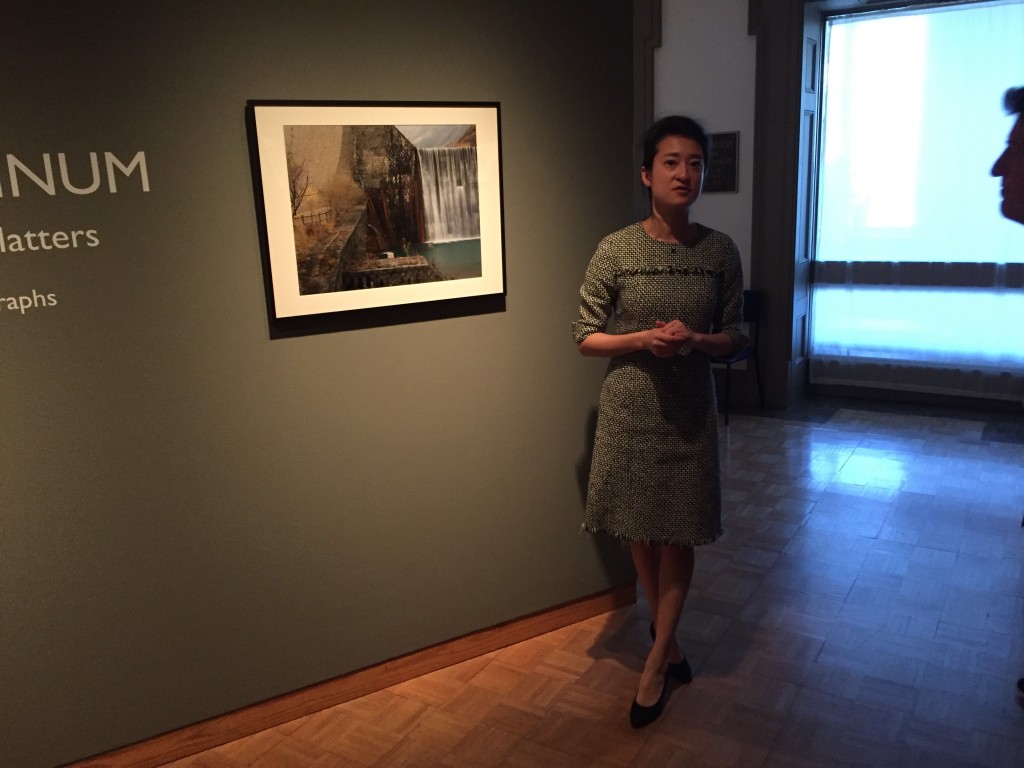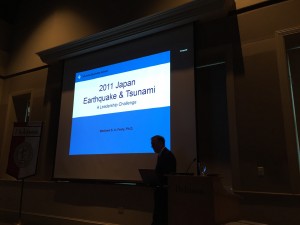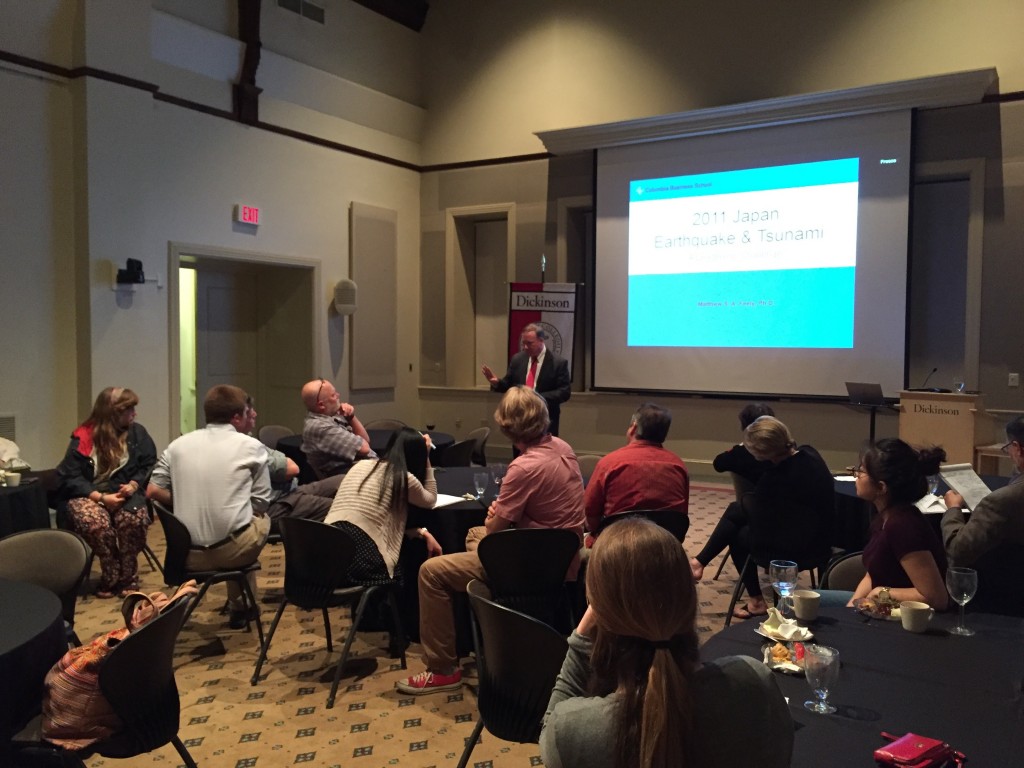Supported by the Henry Luce Foundation on Asian Studies and the Environment, the exhibition Ink, Silver, Platinum: Floating Worlds and Earthly Matters showcases recent museum acquisitions partly selected by Dickinson students. On March 29, 2016, Dr. Ren Wei, Assistant Professor of Art History at Dickinson, led a tour of the exhibition for the faculty colloquium members. Discussion centered around two contemporary landscape photographs created by Yao Lu (b. 1967) and Toshio Shibata (b. 1949), respectively, and one of several ukiyoe woodblock prints recent donated to the Trout Gallery.
 Yao Lu’s 2007 print entitled Viewing the City’s Places of Interest in Springtime digitally manipulates and combines images of construction site rubble with recognizably natural elements found in traditional Chinese landscape paintings such as temple architecture, hills, trees, ponds, and figures. Reflecting the ubiquitous construction waste in China today, the photograph also attempts to create harmony between reality and the imagined, idealized landscape painting tradition in China.
Yao Lu’s 2007 print entitled Viewing the City’s Places of Interest in Springtime digitally manipulates and combines images of construction site rubble with recognizably natural elements found in traditional Chinese landscape paintings such as temple architecture, hills, trees, ponds, and figures. Reflecting the ubiquitous construction waste in China today, the photograph also attempts to create harmony between reality and the imagined, idealized landscape painting tradition in China.
 Toshio Shibata’s 2013 print entitled Nikko City, Nagano Prefecture takes a different approach to large-scale landscape photography. Through careful control of the lighting condition and composition, Shibata defamiliarizes common man-made landscapes by flattening the terrain and heightening the structure’s geometric and coloristic patterns with the use of wide-angle lenses.
Toshio Shibata’s 2013 print entitled Nikko City, Nagano Prefecture takes a different approach to large-scale landscape photography. Through careful control of the lighting condition and composition, Shibata defamiliarizes common man-made landscapes by flattening the terrain and heightening the structure’s geometric and coloristic patterns with the use of wide-angle lenses.
The discussion ended with Utagawa Hiroshige’s woodblock print Twilight Snow on the Asuka Mountain from the series Eight Views of Environs of Edo, dated to 1837-38. The print depicts a serene winter snow scene at Asuka Mountain, a famous place known for its cherry blossoms. The Eight Views theme, by alluding to the well-known poetic experience of the Eight Views of Xiaoxiang in Song Dynasty China, suggests some cultivation on the viewer’s part, thereby elevating the status of print to a learned art form.



